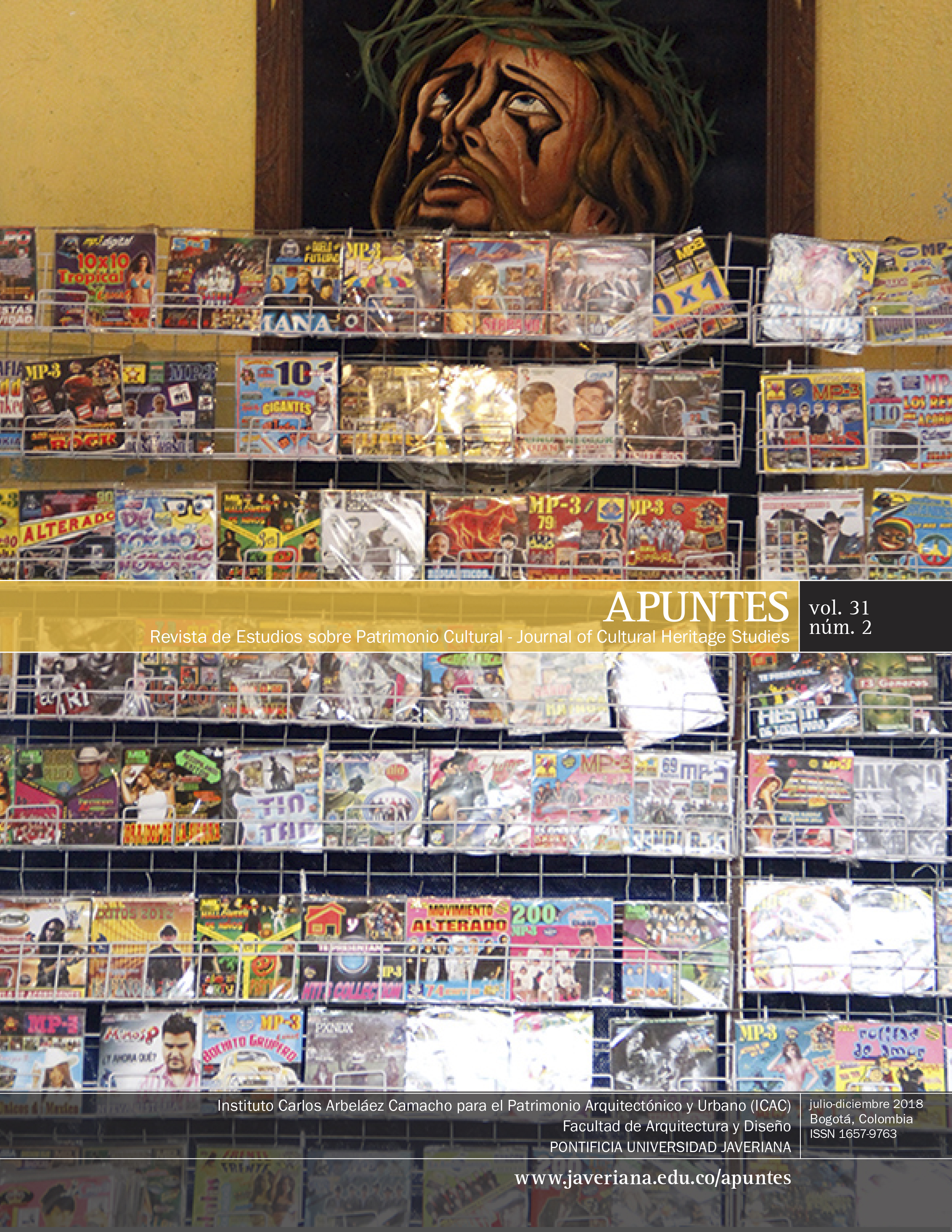Abstract
This reflection starts from the fact that Guanajuato, Mexico, is represented as a city of universal heritage thanks to its emblematic culture of artistic and historic venues. However, the neighborhood in an alley is plenty of significant cultural traits and places based on other valuable objects, like the working, environmental, social and affective experiences. In this place those objects belonging to the institutionalized heritage do not care so much as the life experiences the inhabitants have with such objects in their daily lives. Their value is not only represented in the very artistic or historic pieces, but in the use the inhabitants make of them in their interrelations
Arroyo, R. (2009, abril). Ciudades patrimonio de la humanidad: ¿una significación valorada turísticamente? Topofilia, 1(3). Recuperado de http://148.228.173.140/topofiliaNew/assets/coloquio09arroyo.pdf
Berger, P. (1969). El dosel sagrado. Elementos para una sociología de la religión. Buenos Aires: Amorrortu.
Castells, M. y Mollenkopf, J. (1991). Dual city. Restructuring. Nueva York: Russel Sage Foundation.
Conapo, Consejo Nacional de Población (2014). Dinámica demográfica 1990-2010 y proyecciones de población 2010-2030. Segob/Conapo. Recuperado de http://www.conapo.gob.mx/work/models/CONAPO/Proyecciones/Cuadernos/11_Cuader nillo_Guanajuato.pdf.
Esposito, R. (2009). Comunidad, inmunidad y biopolítica. Barcelona: Herder.
García, M. P. (2011). El patrimonio cultural. Conceptos básicos. Zaragoza: Prensas Universitarias de Zaragoza.
Garduño, R. (2015, abril 25). En manos de extranjeras, 70% de las concesiones de exploración minera. La Jornada, p. 1. Recuperado de http://www.jornada.unam.mx/2015/04/26/politica/005n1pol.
Inegi, Instituto Nacional de Estadística, Geografía e Informática (2015). Información de Guanajuato, Población. En Cuéntame, información para niños y no tan niños. Recuperado de http://cuentame.inegi.org.mx/monografias/informacion/Gto/Poblacion/default.aspx?tem a=ME&e=11.
Inegi, Instituto Nacional de Estadística, Geografía e Informática (s.f.). Información de Guanajuato, Dinámica de la población. En Cuéntame, información para niños y no tan niños. Recuperado de http://www.cuentame.inegi.org.mx/monografias/informacion/gto/poblacion/dinamica.aspx?tema=me&e=11.
Inegi, Instituto Nacional de Estadística, Geografía e Informática (2016). Resultados de la Encuesta Nacional de Ocupación y Empleo. Encuesta Intercensal 2015. Recuperado de http://www.beta.inegi.org.mx/proyectos/enchogares/especiales/intercensal/.
Luhmann, N. (1988). Complejidad y modernidad, de la unidad a la diferencia. Madrid: Editorial Trotta.
Nancy, J.-L. (2001). La comunidad desobrada. Madrid: Arena Libros.
Nora, P. (2001). Entre mémoire et histoire. En Nora, P. (ed.). Les lieux de mémoire, t. 1, La République. París: Gallimard.
Rodríguez, D. (1995). Introducción. En Luhmann, N. Poder. Barcelona: Universidad Iberoamericana. Anthropos.
Secretaría de Turismo del Estado de Guanajuato (2017, mayo). Actividad turística del Estado de Guanajuato [boletín]. Recuperado de http://www.observatorioturistico.org/cenDoc/164e5-Bolet--n-Act.-Tur--stica-Mayo-2017.pdf
Segob, Secretaría de Gobierno (2018, enero). Incidencia delictiva del fuero común 2017. Recuperado de http://www.secretariadoejecutivo.gob.mx/docs/pdfs/estadisticas%20del%20fuero%20comun/Cieisp2017_122017.pdf
Touraine, A. (2012). Crítica de la modernidad. México: Fondo de Cultura Económica.
Unesco (s.f.). Worl Heritage. Recuperado de http://whc.unesco.org/en/about/.
Unesco (s.f.). Patrimonio Mundial. Recuperado de https://es.unesco.org/themes/patrimonio-mundial.
Unesco (2017). Los Estados Partes en la Convención para la Salvaguarda del Patrimonio Cultural Inmaterial (2003). Recuperado de https://ich.unesco.org/es/los-estados-partes-00024.
Villaseñor, A. y Zolla, E. (2012, marzo). “Del patrimonio cultural inmaterial o la patrimonialización de la cultura”. Cultura y patrimonio, 6(12).
Virno, P. (2003). Recuerdo del presente. Ensayo sobre el tiempo histórico. Buenos Aires: Paidós Ibérica
Apuntes is registered under a Creative Commons Attribution 4.0 International Public License. Thus, this work may be reproduced, distributed, and publicly shared in digital format, as long as the names of the authors and Pontificia Universidad Javeriana are acknowledged. Others are allowed to quote, adapt, transform, auto-archive, republish, and create based on this material, for any purpose (even commercial ones), provided the authorship is duly acknowledged, a link to the original work is provided, and it is specified if changes have been made. Pontificia Universidad Javeriana does not hold the rights of published works and the authors are solely responsible for the contents of their works; they keep the moral, intellectual, privacy, and publicity rights.
Approving the intervention of the work (review, copy-editing, translation, layout) and the following outreach, are granted through an use license and not through an assignment of rights. This means the journal and Pontificia Universidad Javeriana cannot be held responsible for any ethical malpractice by the authors. As a consequence of the protection granted by the use license, the journal is not required to publish recantations or modify information already published, unless the errata stems from the editorial management process. Publishing contents in this journal does not generate royalties for contributors.


